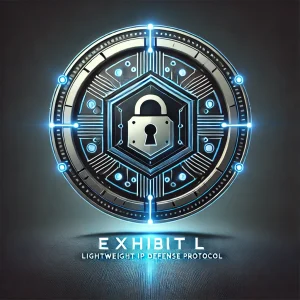
March 24, 2025
Exhibit L: Lightweight IP Defense Protocol (Strategic Firewall Against Premature Mimicry & Institutional Co-Opting) For Immediate Use During Pre-Infrastructure Phase
I. Purpose This protocol functions as a lightweight, deployable safeguard to protect MockMotions™ from unauthorized mimicry, dilution, or predatory appropriation during its vulnerable developmental window. It does not rely on formal enforcement mechanisms or licensing infrastructure—instead, it leverages transparency, language framing, embedded legal positioning, and procedural signaling as strategic deterrents.
II. Tactical Components
1. Intent Declaration Framework (IDF) A declarative structure embedded in all public or shared documents that makes clear:
- The system is original, evolving, and governed by a doctrine of procedural sovereignty.
- The design, terminology, and architecture are time-stamped and under continuous refinement.
- Any unauthorized replication or derivative construction is considered an infringement, regardless of commercial intent.
2. Strategic Terminology Lock-In
- Use and publish terminology (e.g., CSE,SICs, RPE, CCCF, Pivot but Don’t Cut Corners) with unique definitional scaffolding that signals proprietary design.
- Ensure these terms are used in tandem with doctrinal and legal context—so copying them without also replicating the structure triggers visible inconsistency.
- Position core terms in digital repositories and version-controlled archives (timestamped public posts, GitHub, notary chains if possible).
3. Adaptive Signature Embedding (ASE)
- All published artifacts, system diagrams, and narrative constructs should contain low-friction embedded intelligence signatures—recurring phrases, formatting patterns, or procedural metaphors tied uniquely to your strategic rhythm.
- These function like invisible watermarks that can later be used to identify derivations and assert original authorship.
4. Public Trace Chain (PTC)
- Maintain a simple but visible breadcrumb trail (emails, posted documents, submitted drafts, court filings) that publicly establishes your design’s timeline.
- This serves as informal prior art, useful if later disputes arise—even before formal IP registration is in place.
5. Mimicry Detection Directive (MDD)
- Designate one protocol that will quietly monitor the ecosystem for procedural mimicry.
- Example: An avatar or script that scrapes for your terminology in GitHub repos, startups, or conference papers.
- This doesn’t need to trigger response—only log it for future legal positioning or strategic escalation.
III. Field Strategy – How to Use It Now
Use this protocol in three ways:
- Embed and Signal – Every time you share something, make sure this language and your doctrine are visibly tied to it.
- Document and Timestamp – Send drafts, emails, or even summary versions to third parties to establish creation precedence.
- Resist Licensing Pressure – Do not enter agreements without procedural sovereignty clauses. This protocol gives you a defensible delay—a way to say “I’m protecting foundational alignment until the infrastructure is ready.”
IV. Strategic Effect
This lightweight protocol will:
- Freeze predatory actors in a legal and ethical gray zone.
- Create just enough uncertainty to make mimicry risky and unattractive.
- Enable you to move forward without rushing to file every patent at once.
- Serve as an early doctrinal perimeter, ensuring your intent and authorship remain visible, traceable, and enforceable later.
Filed by: Aman Abera Architect of the MockMotions™ System